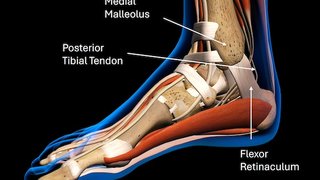The hips don't lie: Signs it's time to consider hip replacement
March 10, 2021

Our hips play a vital and often under-appreciated role in the body’s ability to move – whether we’re standing, walking, running, or playing sports.
Among the largest weight-bearing joints in our bodies, the hips are an intricate network of bones, muscles, ligaments, and cartilage that provide us with stability, mobility, and range of motion.
In short, the hips bear a heavy load, which is why they are vulnerable to fractures and structural damage over time. Even a small imbalance of bone (femoral head) to socket (acetabulum) can wear down the cartilage, causing the bones to scrape together – and causing you pain and mobility problems.
Seemingly minor hip problems can escalate quickly into:
- Pain in the hip, groin, lower back, and knees
- Increased risk of injury, such as falling
- Need for mobility aids, such as a cane or walker
- Severe arthritis and joint damage
In some cases, patients may need total hip replacement surgery (arthroplasty). As our population ages and people stay active into their 60s and 70s, hip replacement has become one of the most common surgeries performed in the U.S. The number of total hip arthroplasty procedures is projected to grow by 71 percent by 2030 to 635,000 annually.

Ninety-five percent of patients who have a total hip replacement surgery experience pain relief, with the success rate remaining at 90 to 95 percent after 10 years post-surgery and 80 to 85 percent at 20 years.
The UT Southwestern Orthopaedics team performs hundreds of hip repair and replacement procedures each year, and our experts help set national quality standards for how these procedures should be performed. In addition to state-of-the-art hip replacement surgery, we offer alternative treatments for hip conditions such as hip dysplasia, hip impingement, or osteoarthritis.
We've made huge strides in hip replacement surgery over the last few decades: more durable equipment and less-invasive techniques have led to better outcomes and shorter recoveries.
But hip replacement is a big procedure, and we don’t recommend it without considering other treatments first. For example, if you have some joint degeneration but no significant mobility limitations or pain, hip preservation therapies can slow the damage and minimize symptoms.
At the end of the day, your hip care plan will depend on your goals for mobility, pain management, and quality of life. Let's take a look at the options.
Hip preservation: Alternatives to joint replacement
In 2017, UT Southwestern launched a hip preservation database to help track the outcomes of thousands of patients who choose alternative hip preservation therapies. Our goal is to determine which therapies benefit patients most and to help more patients choose the best therapy for their unique needs.

Before we recommend hip replacement surgery, your doctor may suggest trying one or more of these alternatives:
- Injections: Injections can be effective for extended periods of time to reduce inflammation and/or cushion the joints with a substance that lubricates the bones.
- Medication: Over-the-counter non-steroidal anti-inflammatory drugs (NSAIDs) such as Advil or Motrin can sometimes control pain due to injury or mild to moderate osteoarthritis. Talk with your doctor to determine whether NSAIDs are safe for you.
- Physical therapy: Gentle exercises can stretch the muscles, improve range of motion, and restore mobility. Our Physical Medicine and Rehabilitation experts can help safely modify daily motions to help ease hip pain.
- Joint preservation surgery: A preservation procedure such as the Bernese periacetabular osteotomy (PAO) aims to address structural deformity and biomechanics of the hip to prevent further degradation of the joint and prevent hip replacements.
Hip reconstruction or revision procedures can help preserve your mobility and reduce pain. Procedures such as arthroscopy, resurfacing, or cartilage transplant may allow surgeons to repair damage without a full replacement. In cases where revision is not enough, it might be time to consider hip replacement surgery.
Related reading: Young and hip: Joint preservation surgery is sometimes the answer
Signs it's time to consider hip replacement
Talk with your doctor about hip replacement if:
- The pain keeps you from doing everyday activities.
- Stiffness prevents you from bending over, such as when you put on your shoes and socks.
- You rely on a cane, walker, or other mobility aid.
- Your hip hurts even when you’re sitting still or laying down.
- Imaging reveals advanced arthritis or significant joint damage.
- The pain is wearing you down emotionally and mentally.
After taking a full account of your symptoms and medical history, your doctor can order advanced imaging tests, such as X-rays and MRIs, to determine the extent of joint damage. Based on these images and your experiences with hip preservation techniques, we can help you decide whether hip replacement surgery is right for you.

Hip replacement: What to expect
In a total hip replacement, we remove the entire ball and socket joint and replace it with a prosthetic implant, usually made of metal, ceramic, titanium, cobalt chrome, and reinforced plastic components. These artificial joints have evolved and improved throughout the years, and most are designed to last 20 to 30 years.
There are multiple ways to perform total hip replacement surgery. The best approach is the one that will correct your specific problem:
- Direct anterior approach: This less invasive method allows us to replace the joint without detaching any tendons using a three- to four-inch incision on the front of the hip. At UT Southwestern, we use a specially designed operating table that allows us to take X-rays during surgery, ensuring proper fit and placement of the hip components. This is my preferred approach since it allows for precision and quicker recovery.
- Traditional approach: This procedure involves making an incision on the side or back of the hip and detaching muscles and tendons from the hip to replace the joint. Some patients require this approach because of their specific hip condition or how their body is shaped.
With either procedure, a physical therapist will have you up and moving within 24 hours of surgery. Early movement is important to begin regaining strength and mobility, as well as to reduce the risk of blood clots. We may recommend that you wear compression stockings to promote good blood flow and/or take blood thinners for a few weeks after surgery to further reduce your risk.
Physical therapy will begin before you leave the hospital. Your physical therapist will show you how to perform strength and mobility exercises. You'll need a cane or walker at first, but you'll gradually bear more weight as you grow stronger.
Recovery from hip replacement
Generally, patients can go home after one to two nights in the hospital. It's important to plan for help during your recovery period, including assistance with cooking, running errands, and cleaning the house. Consider a few temporary modifications, such as installing a raised toilet seat or rearranging your favorite sitting spots so medications, the TV remote, and books are within arm's reach.
Most patients can:
- Drive within three to four weeks
- Return to work within six weeks
- Resume some low-impact sports such as swimming, golf, or hiking within six months

Full recovery from hip replacement surgery can take six months to a year, and you can expect the joint to last 20 to 30 years, and possibly longer.
High-impact sports such as soccer, basketball, or running are not advised for most patients after hip replacement. These activities may put too much stress on the artificial joint and may result in injury or the need for additional surgery. If you're an experienced athlete, talk with your doctor about your personal risks for resuming your favorite sport.
Though we've made great strides in hip replacement surgery, there is always room for improvement. Technological advances such as robotic surgery and 3D imaging allow orthopedic surgeons to perform more precise surgeries. For patients, that translates to even better outcomes and potentially shorter recoveries with fewer restrictions.
Still, amidst all this technology, surgical skill is a major determining factor in your outcomes. It's an art as much as it is a science. Every time I perform a total hip replacement, I draw out the procedure by hand. My patients deserve this extra layer of checks and balances – by examining every angle, curvature, and connection, they get the best possible results.
If hip pain or mobility issues are impacting your quality of life, talk with your doctor. Whether you choose hip preservation or surgery, we can help you get back to a more active life.
To schedule a hip pain consultation, call 214-645-8300 or request an appointment online.










